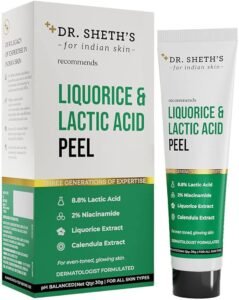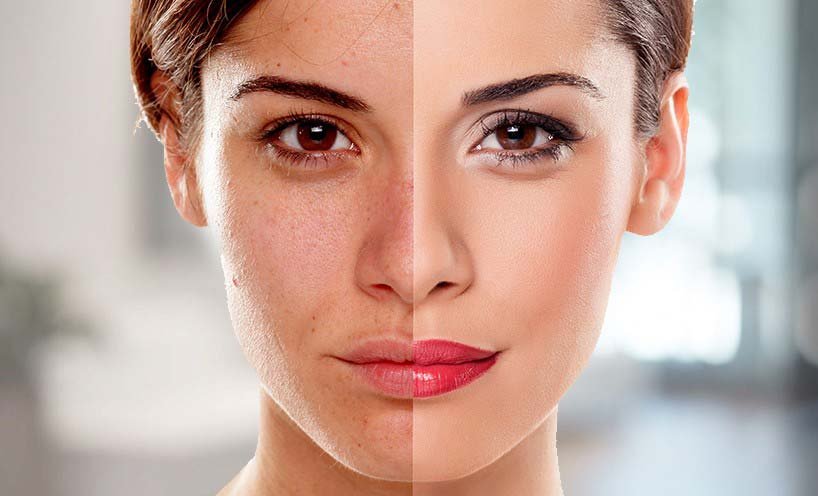Skin aging is a complex biological process influenced by a combination of endogenous or intrinsic and exogenous or extrinsic factors. Because of the fact that skin health and beauty is considered one of the principal factors representing overall “well-being” and the perception of “health” in humans, several anti-aging strategies have been developed during the last years. It is the intention of this article to review the most important anti-aging strategies that dermatologists have nowadays in hand, including preventive measurements, cosmetological strategies, topical and systemic therapeutic agents and invasive procedures.
Skin aging consists of endogenous or intrinsic (genetics, cellular metabolism, hormone and metabolic processes) and exogenous or extrinsic (chronic light exposure, pollution, ionizing radiation, chemicals, toxins) factors. These factors lead together to cumulative structural and physiological alterations and progressive changes in each skin layer as well as changes in skin appearance, especially, on the sun-exposed skin areas.
In contrast to thin and atrophic, finely wrinkled and dry intrinsically aged skin, premature photoaged skin typically shows a thickened epidermis, mottled discoloration, deep wrinkles, laxity, dullness and roughness. Gradual loss of skin elasticity leads to the phenomenon of sagging. Slowing of the epidermal turnover rate and cell cycle lengthening coincides with a slower wound healing and less effective desquamation in older adults.
Presentation of aging of the entire face is associated with the gravity impact, muscles action, loss of volume, diminishing and redistribution of superficial and deep fat, loss of bony skeleton support what all together lead to the face sagging, changes in shape and contour.
Skin Antiaging Approaches.
| Cosmetological care | Daily skin care Correct sun protection Aesthetic non-invasive procedures |
| Topical medicine agents or topical agents | Antioxidants Cell regulators |
| Invasive procedures | Chemical peelings Visible light devices Intense pulsed light (IPL) Ablative and nonablative laser photo–rejuvenation Radiofrequency (RF) Injectable skin biostimulation and rejuvenation Prevention of dynamic wrinkles Correction of static, anatomical wrinkles Restoration (redistribution) of fat and volume loss, skin augmentation and contouring |
| Systemic agents | Hormone replacement therapy Antioxidants |
| Avoiding of exogenous factors of aging, correction of life style and habits | Smoking Pollution Solar UV irradiation Stress Nutrition, diet restriction and alimentary supplementation Physical activity Control of general health |
ANTI AGING TREATMENT OPTIONS- An INSIGHT
Healthy and functioning skin barrier is an important protector against dehydration, penetration of various microorganisms, allergens, irritants, reactive oxygen species and radiation. The skin barrier may be specifically adjusted to allow penetration. For this reason daily skin care may increase skin regeneration, elasticity, smoothness, and thus temporarily change the skin condition.
Healthy and functioning skin barrier is an important protector against dehydration, penetration of various microorganisms, allergens, irritants, reactive oxygen species and radiation. The skin barrier may be specifically adjusted to allow penetration. For this reason daily skin care may increase skin regeneration, elasticity, smoothness, and thus temporarily change the skin condition.
Photoprotection and Systemic Antioxidants

Chronic photodamage of the skin manifests itself as extrinsic skin aging (photoageing). Wrinkling and pigmentary changes are directly associated with premature photo-aging and are considered its most important cutaneous manifestations. The strategies aimed at preventing photo-aging include sun avoidance, sun protection using sunscreens to block or reduce skin exposure to UV radiation, retinoids in order to inhibit collagenase synthesis and to promote collagen production, and anti-oxidants, particularly in combination, to reduce and neutralize free radicals (FR).
The most important source of antioxidants is provided by nutrition. To the most known systemic antioxidants belong vitamin C, vitamin E, carotenoids, and from the trace elements copper and selenium.
Topical Pharmacological Agents with Anti-Aging Properties
Vitamin A (retinol) and its derivates (retinaldehyde and tretinoin) are also a group of agents with antioxidant effects. They can induce the biosynthesis of collagen and reduce the expression of MMP 1 (collagenase 1). Retinol is, at the moment, the substance that is most often used as an anti-aging compound and, compared with tretinoin, causes less skin irritation.
Chemical Peels

Chemical peels are methods to cause a chemical ablation of defined skin layers to induce an even and tight skin as a result of the regeneration and repair mechanisms after the inflammation of the epidermis and dermis. Chemical peels are classified into three categories. Superficial peels [α-β-, lipo-hydroxy acids (HA), trichloroacetic acid (TCA) 10–30%] exfoliate epidermal layers without going beyond the basal layer; medium-depth peels (TCA above 30 to 50%) reach the upper reticular dermis; deep peels (TCA > 50%, phenol) penetrate the lower reticular dermis.
Visible Light Devices: IPL, Lasers, RF for the Skin Rejuvenation, Resurfacing and Tightening
Nonablative skin rejuvenation or “sub surfacing” comes as a low risk and short downtime technology which can improve aging structural changes without disruption of cutaneous integrity. The mechanism of action is supposed to be a selective, heat induced denaturalization of dermal collagen that leads to subsequent reactive synthesis. Nonablative skin rejuvenation is not a precise term since rejuvenation is a controlled form of skin wounding aimed at achieving a more youthful appearance after the wound heals. Lasers emitting 1,320, 1,450, and 1,540 nm using interstitial and intracellular water as target chromophores and pulsed dye lasers (PDL) using oxyhemoglobin as the primary chromophore are now employed for Type II photo rejuvenation only. The clinical efficacy of these nonablative modalities are weaker than that of the ablative methods, however, new collagen formation and clinically observable improvement in wrinkles can be observed.
Injectable Skin Rejuvenation and Dermal Fillers

The goal of skin bio rejuvenation is to increase the biosynthetic capacity of fibroblasts, inducing the reconstruction of an optimal physiologic environment, the enhancement of cell activity, hydration, and the synthesis of collagen, elastin and HA (hyaluronic acid). The desired effect could be achieved by the microinjections in the superficial dermis of products containing only one active ingredient or cocktails of different compounds which are perfectly biocompatible and totally absorbable: HA, vitamins, minerals, nutrients, hormones, GF, amino acids, autologous cultured fibroblasts, homeopathic products, etc.
Products injected within or beneath the skin to improve its physical features by soft tissue augmentation are known as fillers. The duration of effect for HA fillers ranges from 3 to 12 mo. The long-lasting dermal fillers maintain the position 1–2 y or even more.
Botulinum Toxin

Regular BTX injections can slow down the visible aging process by helping in the management of certain dynamic facial lines and wrinkles. Current treatment options of exaggerated frown lines, glabellar lines or crow feet such as surgery or implants, do not address the underlying cause of these lines, namely the excessive nerve stimulation. The mechanism of action of BTX makes it an ideal agent to target the major cause of these dynamic lines.
Autologous Platelet-Rich Plasma (PRP)
PRP is derived from fresh whole blood, which contains a high concentration of platelets. These factors are known to regulate processes including cell migration, attachment, proliferation and differentiation, and promote extracellular matrix (ECM) accumulation by binding to specific cell surface receptors. It has been shown that PRP may induce the synthesis of collagen and other matrix components by stimulating the activation of fibroblasts, thus rejuvenating the skin.
Frequently Asked Questions (FAQs)
Q.1 What are the latest advancements in anti-aging technology and procedures offered in Bangalore?
A. The latest advancements in anti ageing treatment in Bangalore include non-invasive skin tightening, laser resurfacing, dermal fillers, and regenerative therapies like PRP for youthful skin.
Q.2 What are the latest trends in cosmetic surgery that surgeons in Bangalore are adopting?
A. The best cosmetic surgeon in Bangalore is adopting trends like minimally invasive procedures, 3D imaging for precision, fat grafting, and advanced laser techniques for natural results.
Q.3 What services are typically offered at skin care clinics in Bangalore?
A. A skin care clinic in Bangalore typically offers services like laser treatments, chemical peels, anti-aging therapies, acne treatments, skin brightening, and customized facials.

